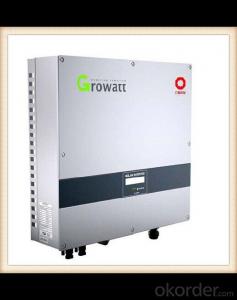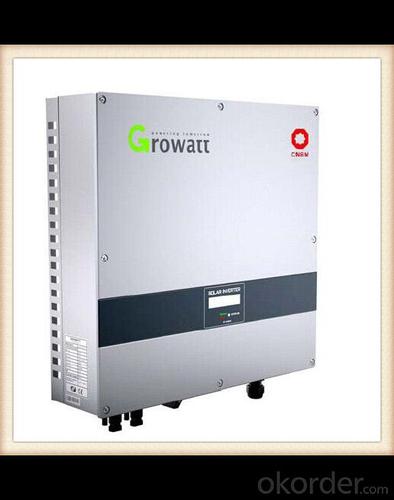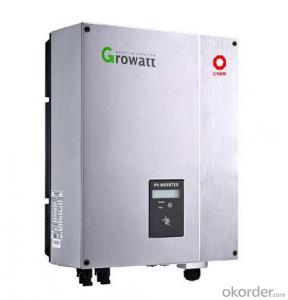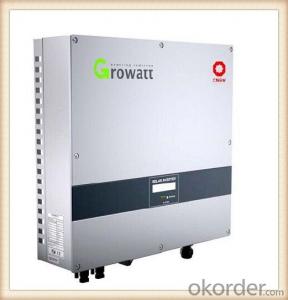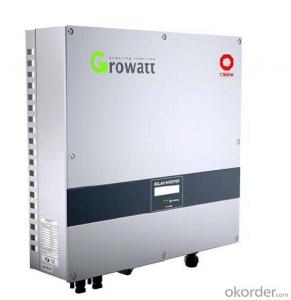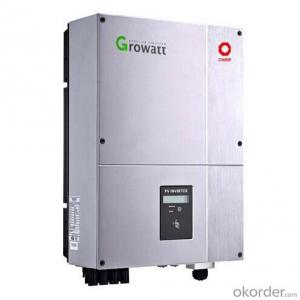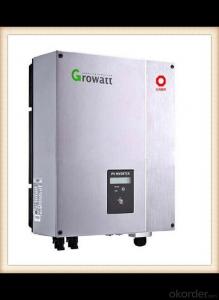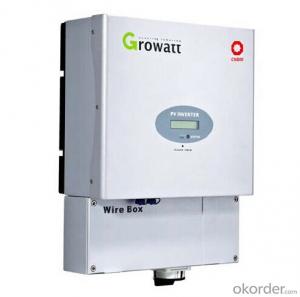5kW CNBM-3000TL Grid-Tie Solar Inverter with Energy Storage Hybrid Solar Inverter
- Loading Port:
- China main port
- Payment Terms:
- TT OR LC
- Min Order Qty:
- 1000 watt
- Supply Capability:
- 100000 watt/month
OKorder Service Pledge
OKorder Financial Service
You Might Also Like
Introduction
CNBM-1000TL/1500TL/2000TL/3000TL/4000TL/4400TL/5000TL
Pure sine wave output
Microprocessor controlled to guarantee stable charging system
Multiple operations: Grid tie, Off grid, and grid tie with backup
Built-in MPPT solar charger
LCD display panel for comprehensive information
Multiple communication
Green substitution for generators
User adjustable charging current up to 25A
Maximum efficiency of 97.9% and wide
input voltage range
Wide MPPT voltage
Internal DC switch
Transformerless GT topology
Compact design
MTL – String
Multi-MPPT
Certificate: CE, VDE 0126-1-1,
DK5940, G83/1-1, G59/2, RD1663,
EN50438, VDE-AR-N4105, CEI-021,
IEC-62109, ENEL-Guide, UL1741,
UL1998, IEEE1547, CSA
Warranty: 5/10 years
Features
Maximum efficiency of 96.9% and wide input voltage range
Internal DC switch
MTL-String
Bluetooth/RF technology /wifi
Transformerless GT topology
5 years warranty(10years as optional)
Images
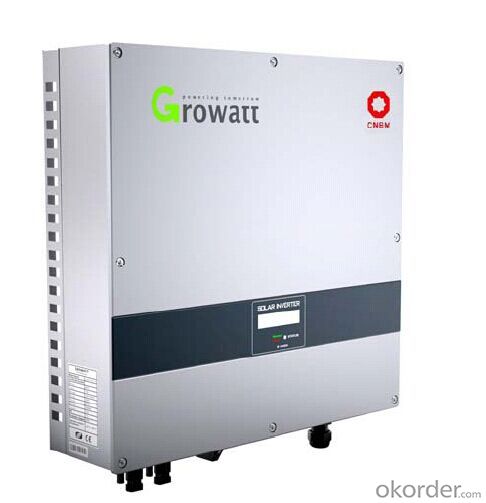
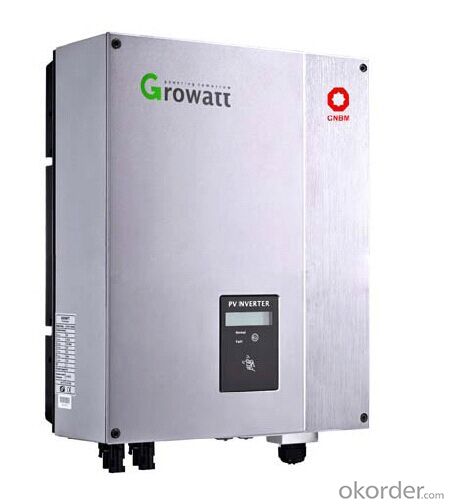
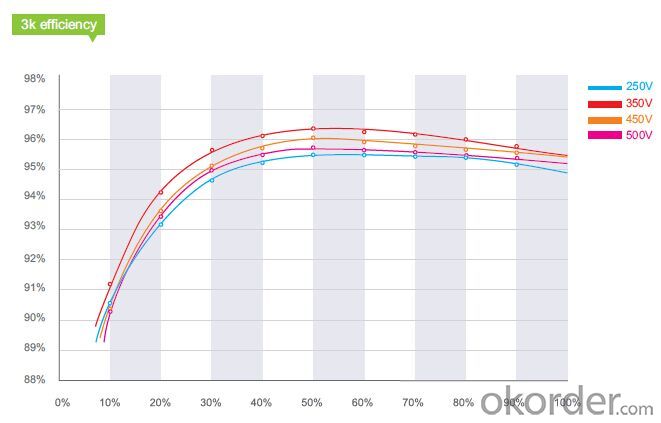
Sepecification

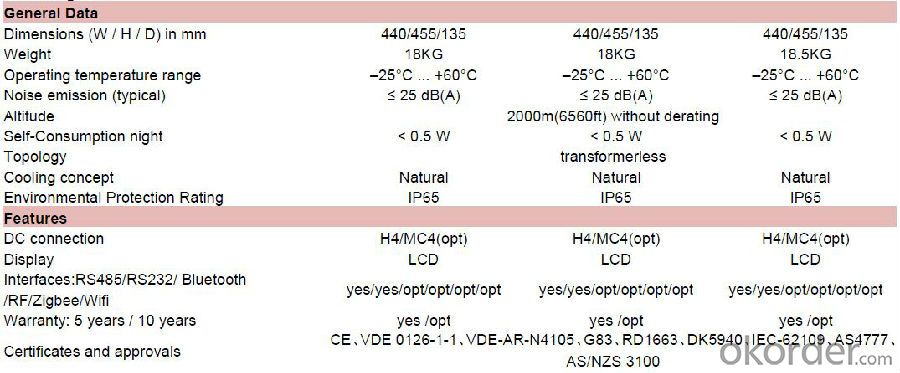
FAQ
Q1: How to choose a right inverter?
A1:Tell us your demand, then our sales will recommend a suitable inverter to you.
Q2: What's the different between inverter and solar inverter?
A2: Inverter is only accept AC input, but solar inverter not only accept AC input but also can connect with solar panel to accept PV input, it more save power.
Q3: How about the delivery time?
A3: 7 days for sample; 25 days for bulk order.
Q4: What is the warranty of inverter?
A4: 5/10 years warranty on CNBM-Solar product.
Q5: How to solve the technical problem?
A5: 24 hours after-service consultancy just for you and to make your problem to solve easily.
- Q: What is the function of a solar inverter?
- The function of a solar inverter is to convert the direct current (DC) electricity generated by solar panels into alternating current (AC) electricity that can be used to power household appliances and be fed into the electrical grid.
- Q: Can a solar inverter be used in mobile or portable solar systems?
- Yes, a solar inverter can be used in mobile or portable solar systems. In fact, they are essential components of such systems as they convert the DC power generated by solar panels into AC power that can be used to power various devices and appliances. Portable solar systems often include built-in inverters to enable convenient and efficient use of solar energy on the go.
- Q: What are the communication protocols used in solar inverters?
- Solar inverters commonly use several communication protocols to enable communication with other devices or systems. Some of the most frequently employed communication protocols in solar inverters include: 1. Modbus: Modbus is an extensively utilized communication protocol for industrial devices, including solar inverters. It facilitates the transmission of data between the inverter and other devices, such as monitoring systems or data loggers. Modbus is well-regarded for its simplicity and flexibility, which contribute to its popularity in the solar industry. 2. SunSpec: SunSpec is a communication protocol specifically designed for the solar industry. It establishes a standardized means for solar inverters to communicate with other devices, such as smart meters or monitoring systems. SunSpec supports both wired and wireless communication, allowing for effortless integration of solar inverters into larger energy management systems. 3. CAN bus: CAN (Controller Area Network) bus is a widely employed communication protocol in various industries, including automotive and industrial applications. It is a robust and reliable protocol that enables high-speed communication between devices. Some solar inverters employ CAN bus to communicate with other devices or systems, ensuring a dependable means of data transfer. 4. Ethernet: Ethernet is a prevalent communication protocol in the IT industry and is also utilized in certain solar inverters. By utilizing Ethernet, solar inverters can communicate with other devices or systems over a local area network (LAN) or the internet. Ethernet offers high-speed communication and can accommodate various communication standards, making it a versatile option for solar inverters. It is essential to note that different solar inverter manufacturers may employ different communication protocols or a combination thereof. The selection of a communication protocol depends on factors such as the specific requirements of the system, compatibility with other devices or systems, and the desired level of integration.
- Q: How does a solar inverter handle islanding detection and prevention?
- A solar inverter handles islanding detection and prevention by continuously monitoring the electrical grid's stability. It utilizes anti-islanding protection mechanisms to detect any abnormal conditions, such as voltage fluctuations or frequency deviations, that may indicate the presence of an islanded grid. In the event of islanding, the inverter immediately disconnects from the grid to prevent energy feed-in and effectively isolate the solar system. This ensures the safety of utility workers, prevents damage to equipment, and helps maintain the stability of the overall electrical grid.
- Q: How does a solar inverter handle voltage sag or drop in the grid?
- A solar inverter handles voltage sag or drop in the grid by constantly monitoring the grid voltage. When it detects a drop in voltage, it adapts its operation to ensure that the output voltage from the solar panels matches the grid voltage, thereby stabilizing and compensating for the voltage sag or drop. This helps to maintain a consistent and reliable power supply from the solar panels to the grid.
- Q: What are the safety features of a solar inverter?
- The safety features of a solar inverter typically include surge protection, overvoltage protection, short circuit protection, ground fault detection, and overtemperature protection. These features help to prevent damage to the inverter and the electrical system, ensuring safe and reliable operation.
- Q: How do you calculate the maximum power point tracking range for a solar inverter?
- To calculate the maximum power point tracking (MPPT) range for a solar inverter, you need to consider various factors such as the solar panel's voltage and current characteristics, temperature, and the inverter's efficiency. Using the voltage-current (V-I) curve of the solar panel, the MPPT range can be determined by finding the point where the power output is maximized. This is typically done using algorithms within the solar inverter to continuously adjust the operating point to track the maximum power available from the solar panel.
- Q: How does a solar inverter handle voltage unbalance?
- A solar inverter handles voltage unbalance by continuously monitoring the phase voltages of the grid. If a voltage unbalance occurs, the inverter adjusts its output voltage and frequency to maintain a balanced supply to the grid. This ensures that the solar inverter can efficiently convert the DC power generated from the solar panels into AC power that is synchronized with the grid, despite any voltage imbalances.
- Q: What is the role of a voltage control unit in a solar inverter?
- The role of a voltage control unit in a solar inverter is to regulate and stabilize the voltage of the direct current (DC) power generated by the solar panels before it is converted into alternating current (AC) power. It ensures that the voltage remains within the desired range to optimize the efficiency and performance of the solar inverter, as well as protect the connected appliances or grid from potential damage due to voltage fluctuations.
- Q: Can a solar inverter be used with different types of communication interfaces?
- Yes, a solar inverter can be used with different types of communication interfaces. Most modern solar inverters are designed to be compatible with various communication protocols such as Wi-Fi, Ethernet, RS-485, and Bluetooth. This allows for easy integration and communication with different monitoring systems, smart devices, and the grid.
Send your message to us
5kW CNBM-3000TL Grid-Tie Solar Inverter with Energy Storage Hybrid Solar Inverter
- Loading Port:
- China main port
- Payment Terms:
- TT OR LC
- Min Order Qty:
- 1000 watt
- Supply Capability:
- 100000 watt/month
OKorder Service Pledge
OKorder Financial Service
Similar products
Hot products
Hot Searches
Related keywords
